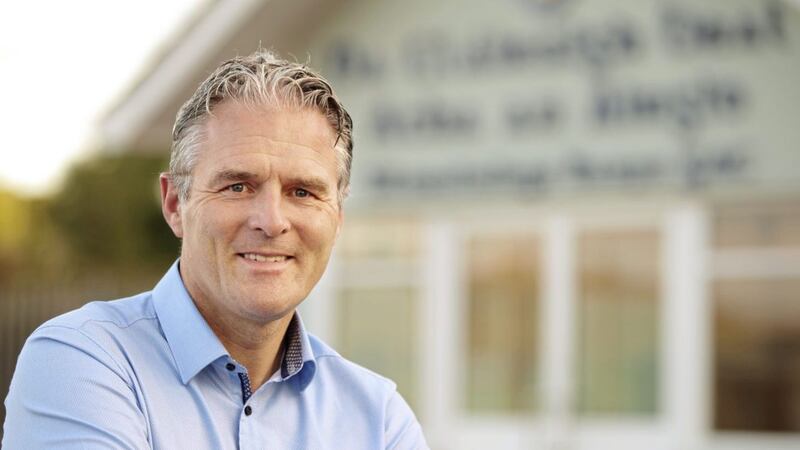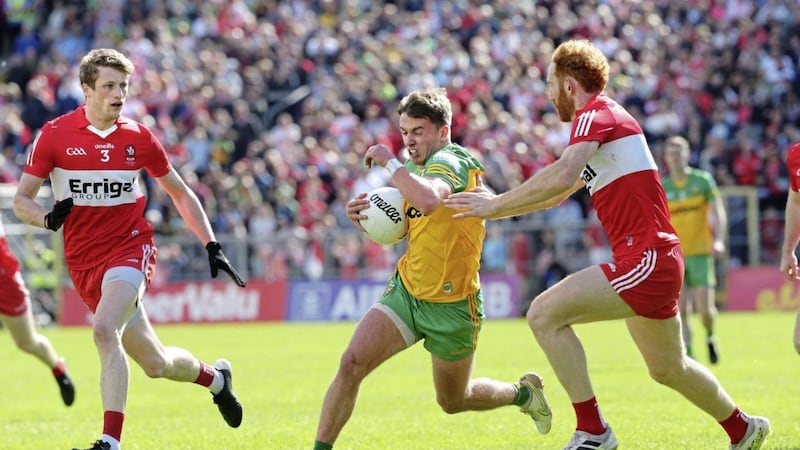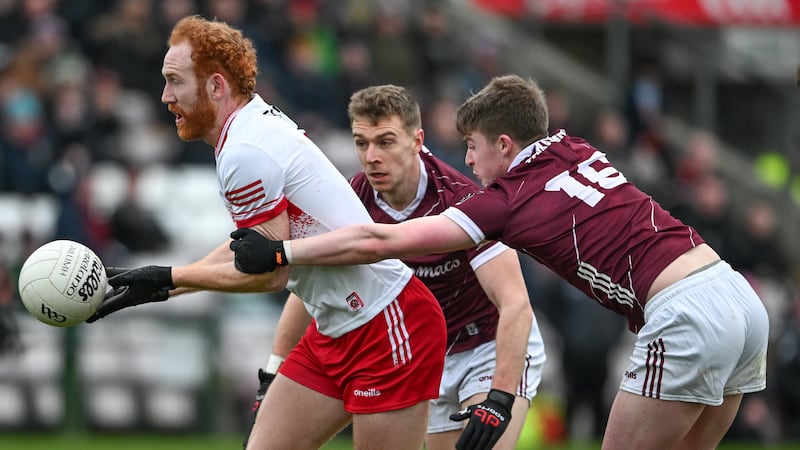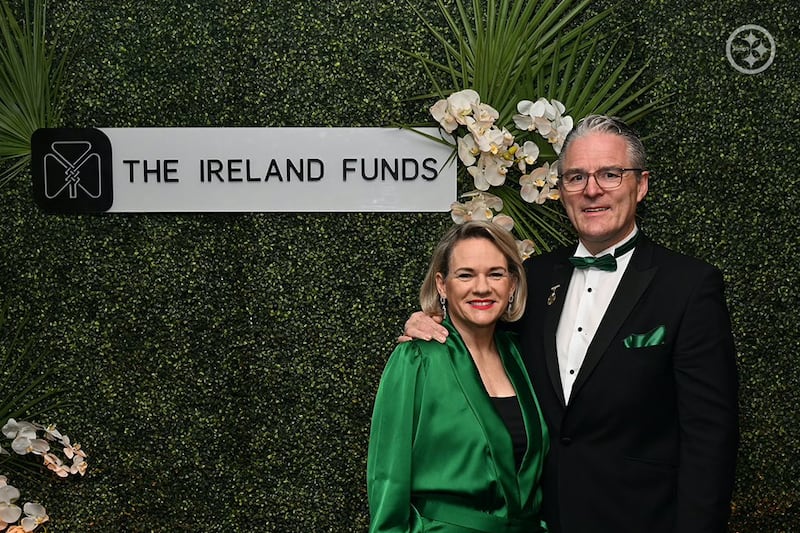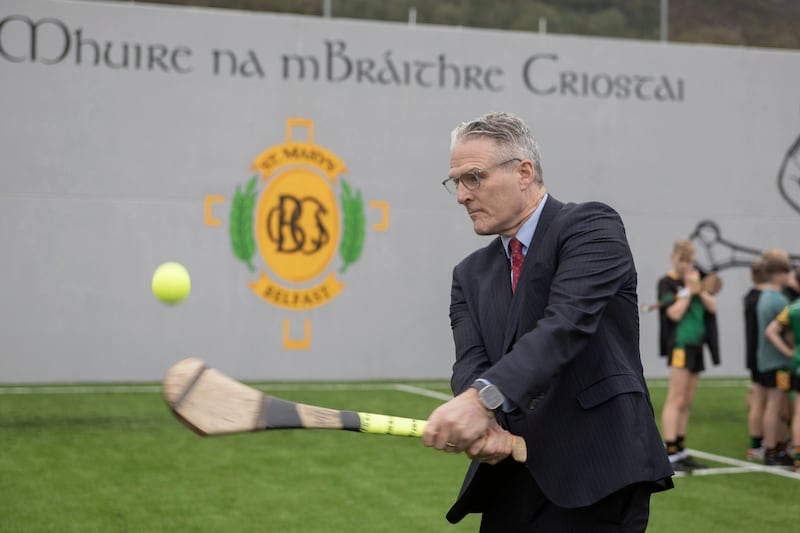In the second part of an interview with GAA presidential nominee Jarlath Burns, he discusses with Cahair O’Kane the issues of Dublin’s funding, his proposals for a strategic review, the rural-urban divide, the Irish government’s ‘disrespect’ for the GAA, and how to deal with the global problems around keeping young engaged with sport …
Cahair O’Kane: What will form the basis of your presidency if you are elected next spring?
Jarlath Burns: “The main part of my presidency will be a new strategic review. I was involved with the last one ordered by Sean McCague in 2001. Chapter one was Dublin. Peter Quinn was chair of that committee and said there were vast areas of Dublin where people didn’t even know that the GAA exists, and that we were in danger of losing ourselves in the capital city. First, there was a very successful plan to put GPOs in that were half-club, half-school. At the same time, Dublin county board read the review and made said they needed to make themselves commercially attractive and strong. They appointed John Costello and got a very good sponsor in Arnotts.”
CO’K: The funding of Dublin is a major issue. Is it something that you would directly tackle?
JB: “Until somebody does a PHD study that shows a direct link that says otherwise, I will always say the current Dublin success is down to factors not directly linked to the money going into Dublin. They haven’t won a minor All-Ireland since 2006. There isn’t a massive conveyor belt coming through. We’re always worried in the GAA. I’d say don’t be worried yet – celebrate this wonderful team and see in a few years.
“One of the metrics people use is ‘per member’ but a lot of the numbers are schoolchildren who aren’t members of any club. The GAA is going in, they could invest three hours getting one child in P5 to hit a ball with a hurl. That child’s not going to play at any level, but it’s increasing participation and the knowledge levels of the GAA. I think that’s a worthy strategy and should continue.”
CO’K: Tyrone have four full-time football coaches and one part-time to service the whole county. Why is the investment not being spread elsewhere?
JB: “What I would want the strategic review to do is properly, scientifically assess the impact of every intervention in the last 20 years in Dublin. If it needs to be curtailed, curtail it. I’d be looking more at what we can learn from this model that’s worked that can be transplanted into other counties. £11m is given each year of the GAA’s budget to coaching. Per capita, the GAA does the best it can. If there’s a better formula and a better way of doing it, I will find it and do it.”
CO’K: What do you envisage being the major focuses of the proposed Strategic Review?
JB: “The first thing will be the GAA and its relationship with urban Ireland. The second thing will be its position in rural Ireland as regards society and how it’s changing. We’ll look at the GAA’s position in Irish society in general, in terms of the promotion of our culture and us being a multi-cultural society, and how relevant are we in the promotion of Irish culture, the Irish language, and our role in all that. I’d like a whole audit of the six values of the GAA – community, amateur status, respect, player welfare, inclusion and teamwork. Finally, what the GAA is going to look like on its 150th anniversary, in 2034. Aoghan [Ó Fearghail] got together some of the best minds in the GAA to try and project what it would look like in 2034, and it was a very interesting document. We need to be starting to propel ourselves into that space because of the way in which society is changing. You hear it in other sports, that people are going to matches to ‘consume’ rather than support, particularly rugby and soccer. Our games are rare in that people actually still go to support their team, and that’s changing.”
CO’K: What do you envisage becomes of the strategic review?
JB: “It will probably lead to a special congress, which could very well lead to some radical proposals, based on the consultations we do and the deductions of the committee. I think we would revisit the Dublin thing. We would have to revisit the whole area of amalgamation, I would like to see an amalgamation toolkit that does an audit of the players you have and works out where the best amalgamation is, which should be within parishes or teams beside each other. We have big questions to ask ourselves about amalgamations, how we’re doing that at the minute is very ad-hoc, and we need a far more strategic approach.”
CO’K: Rurally, the GAA is struggling. The GAA has talked about needing to do more to help, but do the actions match the words? The big increases in funding last year were Kildare, Meath, Antrim, etc – areas with big urban population centres?
JB: “The GAA is an organisation of people, and there’s no point putting money in an area where there’s no people to spend it on. There’s been a major growth in the Dublin conurbation, into Meath and Kildare, but that’s not showing up in greater numbers playing. That’s why the east Leinster project was born, to try and get those people involved. The rural depopulation is in the west, not the east. The GAA throwing a few million at the west won’t change it, because it’s a migration issue.
“If the Irish government emptied all its coffers into the GAA’s coffers, it still couldn’t adequately pay the GAA for what it does throughout Ireland, in every parish. The government in the 26 counties is disrespectful to the GAA.
“There’s a new law where you have to now pay tax of hurleys. The closing of rural post offices, particularly in Gaeltacht areas, is pretty much the government saying ‘we’ve given up the ghost, we’re just removing because it’s not viable’. The national strategic plan unveiled in the 2000s had hub towns like Portlaoise, Letterkenny, etc and was very good for the GAA because it produces decentralisation from Dublin into the hub towns, and all the villages would get a kick. They’ve since changed the national development plan and they didn’t consult on the GAA with that, and the new plan is not conducive with the GAA being able to do its work best. The lack of respect from government for the GAA is scandalous.
“The Irish government’s in a unique position that they have an indigenous sport that’s doing so much for social capital, wellbeing, sport, everything, and they’re not giving us any credit – in fact, they’re penalising us. It’s in the last GAA’s national strategy to stand up in front of government and say ‘we want a better deal’.
“The GAA isn’t going to stop rural depopulation. There’s no rural depopulation in south Armagh, but we won an Armagh minor semi-final on Monday night with two subs. In any club, you’ve maybe 100 players at U8, maybe 50 at U10, and then there’s the tipping point between u12 and U14 where lads realise ‘I’m not all that good, I might get on but I’m not going to be a sub’. We have to make the GAA a more attractive option to young people who are developing more sedentary lifestyles. I see it all the time in school.”
CO’K: How do you do that?
JB: “That’s very difficult because you’re trying to change a culture that exists within young people. They can spend three hours at home playing FIFA and get the same kick out of that as they’d get out of a training session. That’s a challenge for sport globally in the next 10 or 15 years. Look at this area. Ireland is number one in rugby. There’s a rugby team in Newry that covers right to the border in Crossmaglen, out to Kilkeel and almost to Banbridge, and taking in Warrenpoint, and they weren’t able to field an U18 team this year. We [Silverbridge GAA] are lamenting the fact we only had two subs but we’re a tiny club. The GAA still has a significant foothold with the young people of Ireland, but we can’t take that for granted.”
CO’K: Moves have been made towards the full integration of ladies’ football and camogie but both codes would think they’re doing well on their own?
JB: “Under Liam O’Neill, I was on GAA management, and there was a move made for full integration. In fairness to the LGFA and Cumann Camogiocht na hEireann, they resisted that. They felt it was going to be takeover, and that’s understandable. Aoghan moved to do a memorandum of understanding between the organisations, which is getting us closer. In most clubs, there has been full integration from the word go, it’s all one club. There was 24,000 at the camogie, 56,000 at the ladies’ final – would that have been the case if the GAA had been running those two organisations and not a dedicated bunch of people who really promote and develop the games in their own exciting way? I don’t think so. We should allow that to occur organically, in no way trying to take over or usurp any organisation that has the ability to do such a good job.”
CO’K: Hurling is struggling beyond the top eight or nine counties, have you any plans to arrest the struggle beyond that?
JB: “There’s no president can come in on a white horse, wave a magic wand and suddenly Armagh will be playing Kilkenny in a Liam MacCarthy Cup final. It’s always a struggle because the GAA’s based bottom-up. We’re relying on organic change, people to make decisions. Look at the GAA strategy from 2015-2018, it had four pillars. The first is that there’d be meaningful games. Coach education would improve, and you’d Liam Sheedy coming to Antrim, Humphrey Kelleher coming to Armagh, and they made a big difference. The sharing of good practice – if you see something that works, that there’s no arm around the homework, everyone’s working together. Planning and funding initiatives is the fourth one. Where counties have shown a strategy, the GAA has been very good at funding that. The Celtic Challenge has helped more than anything in the last 10 years. But there’s no magic wand, it’s hard work on the ground and funding where you see an initiative that is worthy of funding. Every effort should be made to help small hurling clubs that are going from hand-to-mouth every year.”
CO’K: Will you back the tiered championship?
JB: “No. A guy called Jordan Peterson wrote a book called ’12 Rules For Life’. Rule three was ‘compare yourself to what you were yesterday, not what somebody else is today’. I sat with a few Tipperary people at the final a few weeks ago and they were saying ‘it’s not the best team we’ve had, but it’s good to win another All-Ireland’. I sat with Armagh people when Armagh won in 2002, I was on the TV that day and I nearly jumped out of the stand. You’ll never forget that emotion. We all start every year with some silly, illogical feeling that you could win the provincial championship or Sam. It’s illogical and irrational, but what part of the GAA is rational? Nothing.
“If you look at a tiered championship, that pits teams into a certain area. May’s an untidy month because all the minnows come out and get hammered, and we go ‘terrible’. Yet the third round of the FA Cup is seen as the glamour round because that’s when Yeovil could play Man Utd. They might be beaten 7-0 but it’s a great occasion.
“Armagh didn’t win Ulster this year but we made improvement. We can build on that. I won an Ulster in 1999 – it took me 13 years to get it. My Ulster means to me the same as an All-Ireland means to a Kerry man. It’s all relative. Based on that model, a tiered championship shafts the weaker counties. What’s wrong with giving Antrim a chance against Tyrone, letting them run out live on TV? Is it because it makes the place look untidy if they get hammered? They mightn’t get hammered the next time.
“The other thing about tiers is that I fear that it would spell the death already of the provincial championships, and I don’t want to see that happening.”
CO’K: If you’re going out the door in 2023, what do you want people to remember from your presidency?
JB: “I think we can get very hung up on legacy, and that’s a big mistake for a president, because that means it’s all about him and his ego. The president is there to lead the association. He will have his own vision but he’s there to give leadership in times when it’s required. To speak up for the GAA at times when it needs a voice, and to give a voice to the ordinary membership. We can sometimes obsess about this Dublin-based GAA, and you hear people talking about it as if it’s a different association. The GAA is all of us. I’d like to think that at the end of my presidency, we’ll be more united in understanding why we make the decisions we make, and how they impact positively further down the chain.”
